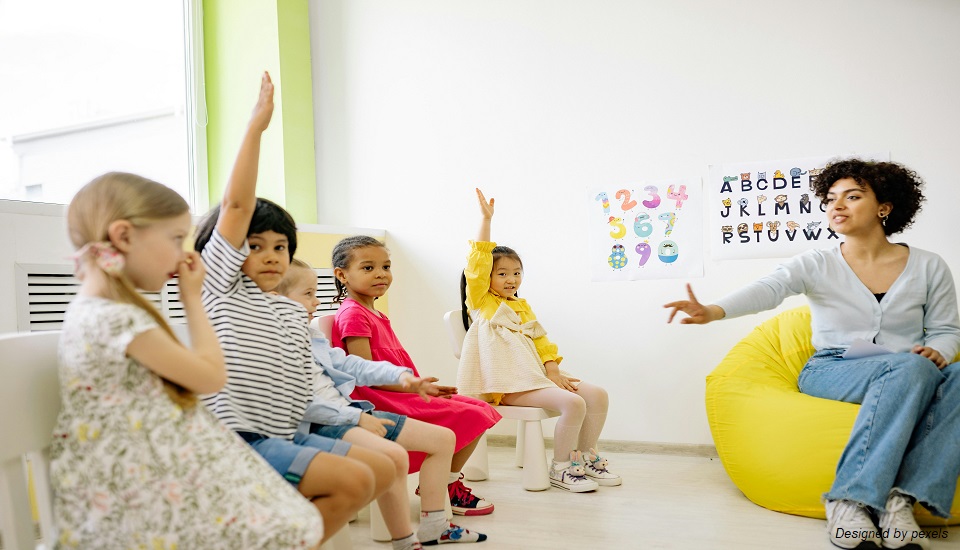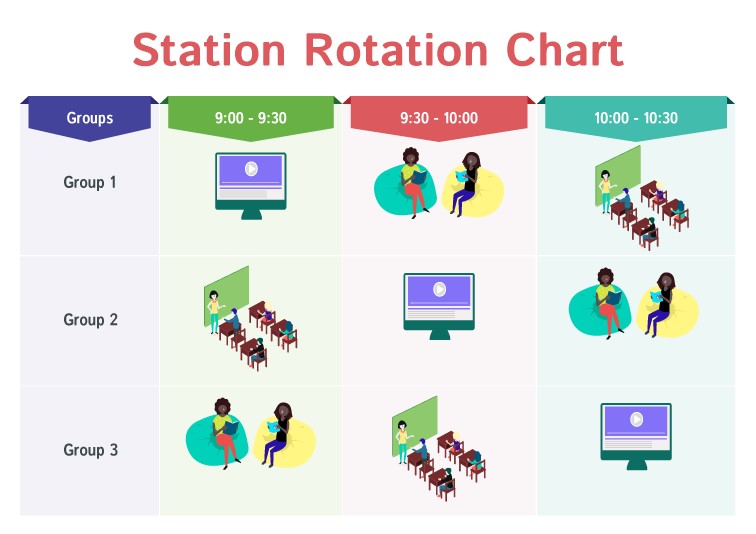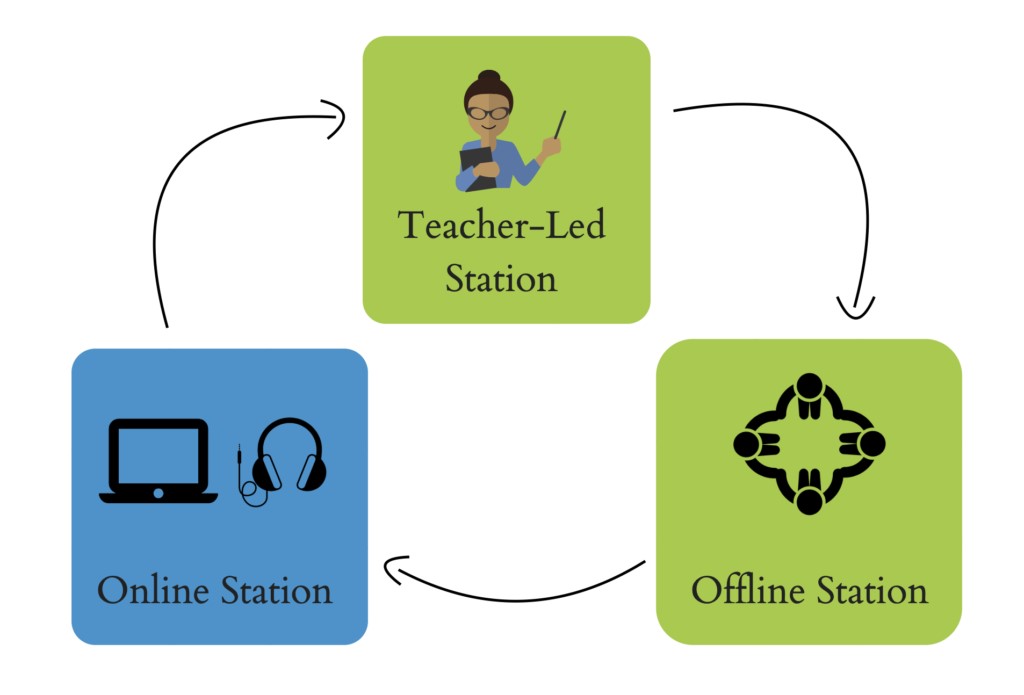How To Use Station Rotation Model To Reap Amazing Benefits?
5th March 2024

Innovative teaching techniques are always being developed in today's changing educational environment to better engage students and improve their learning outcomes. The station rotation model is one method that is becoming more and more popular. This adaptable and dynamic approach gives teachers an effective tool to support active student involvement, and individualized education, and meet a variety of learning requirements.
Contrary to popular belief, station rotation may be modified for use in lesson plans at all grade levels. Regardless of the subject or age group you are teaching, it is helpful to include pupils in the learning process. Here is everything you should know.
What Is The Station Rotation Model?
The station rotation model is an educational framework that turns conventional classrooms into lively learning spaces. Basically, within a single class hour, the students are divided into smaller groups and rotated through several learning stations. Every station is thoughtfully crafted to offer certain lessons or exercises, giving students a variety of opportunities to interact with the subject matter.

Students have a variety of learning experiences when they move between stations which encourages active investigation and a greater comprehension of the material. A few educators could choose to set up one of their stations as an online learning environment. This option integrates technology with the teaching and learning process in the classroom.
Every classroom, instructor, and student has unique abilities and resources. Some teachers might find it more challenging to set up technology-based stations than others. You can act in a way that best suits your kids and your classroom. Rotating stations in a blended fashion is only one of several options.
Hey, do you follow us on Social Media? We regularly share upgraded educational content, tips, feedback and more. Check us out by clicking the profiles here - Facebook / Twitter / LinkedIn / Pinterest / Instagram / YouTube
Different Types Of Station Rotation Models For Students

Here are three distinct types of station rotation models suitable for all grade levels that you might try to implement:
- Teacher-Led Station
Teachers act as facilitators in the teacher-led station, giving a small group of pupils focused teaching and direction. Individualized attention, focused assistance, and the chance to address specific learning needs are all made possible by this station.
Group discussions, practical demonstrations, and participatory storytelling may be part of the teacher-led station for younger grades. Higher grades could include more in-depth conversations, project-based learning, or curriculum-aligned guided excursions. Teacher-led stations are also excellent resources for getting feedback.
- Offline Station
The offline station places a strong emphasis on interactive, tactile learning that fosters imagination and teamwork. Students interact with tangible objects, educational tools, or conventional resources at this station.
Learning occurs at these stations when students explore books, notebooks, manipulatives, and other tactile materials. Students are urged to think about the lesson on their own or use drawings to convey what they have learned.
- Online Station
The online station uses technology to provide web-based tools, interactive simulations, and digital material. This station assists students in acquiring critical 21st-century abilities and is especially pertinent in the current digital era. Beyond solitary study, technology integration in stations promotes group conversations and cooperative projects even in virtual environments.
Class sessions are facilitated by video conferencing, and students may easily share ideas using digital communication tools. It could include cooperative initiatives, virtual labs, and internet research. In addition to improving technological competence, the online station gives users access to a multitude of educational resources that go beyond what is often found in a classroom.
What Are The Benefits Of The Station Rotation Model
Here are some key advantages that situation rotation models can have for both students and teachers:
- Personalized Learning
Personalized learning is possible using the station rotation paradigm. With customized training based on their unique requirements and learning preferences, students are free to work at their speed.
This method guarantees that every student in the classroom gets the assistance they need while also assisting in addressing their varied demands.
- Differentiated Instruction
Teachers can more successfully differentiate instruction when they use the station rotation paradigm. Teachers can tailor their training to each student's specific requirements.
They can do this by providing a range of learning stations that cater to different learning modalities and levels of difficulty. This makes it possible to guarantee that every student is suitably challenged and involved in their education.
- Flexibility And Differentiation
Teachers can modify the station rotation model to meet the unique demands of different disciplines since it is adaptable and applicable to a wide range of courses.
To guarantee flexibility in the distribution of material, educators can create stations that correspond with certain learning objectives.
Implement Station Rotation For a Better Learning Experience
Your classroom may be revitalized by implementing the station rotation approach into your teaching repository. By comprehending its tenets, advantages, and versatile station designs, you may establish a dynamic and captivating educational setting that meets the varied requirements of your pupils. In case you want to build effective teaching strategies, try pursuing a Diploma in Early Years Care and Education to learn about the best teaching practices and kickstart your teaching journey.
We believe education should be accessible for everyone. That’s why we don’t charge for our blogs. Find the right course that will help you in your career with us, contact us at - 1800–212–6400. You can mail us at act@asiancollegeofteachers.com
Written By: Sonal Agrawal